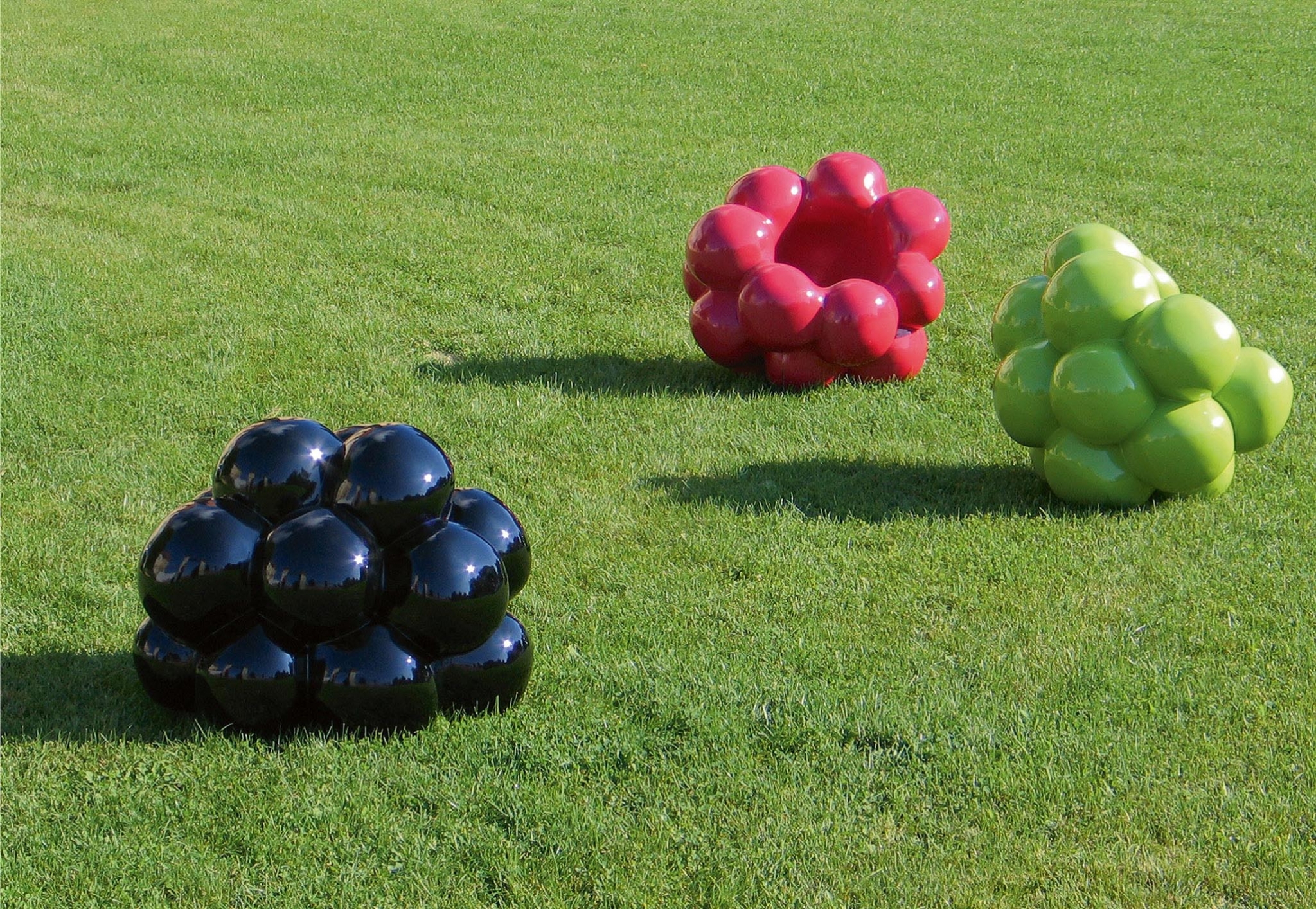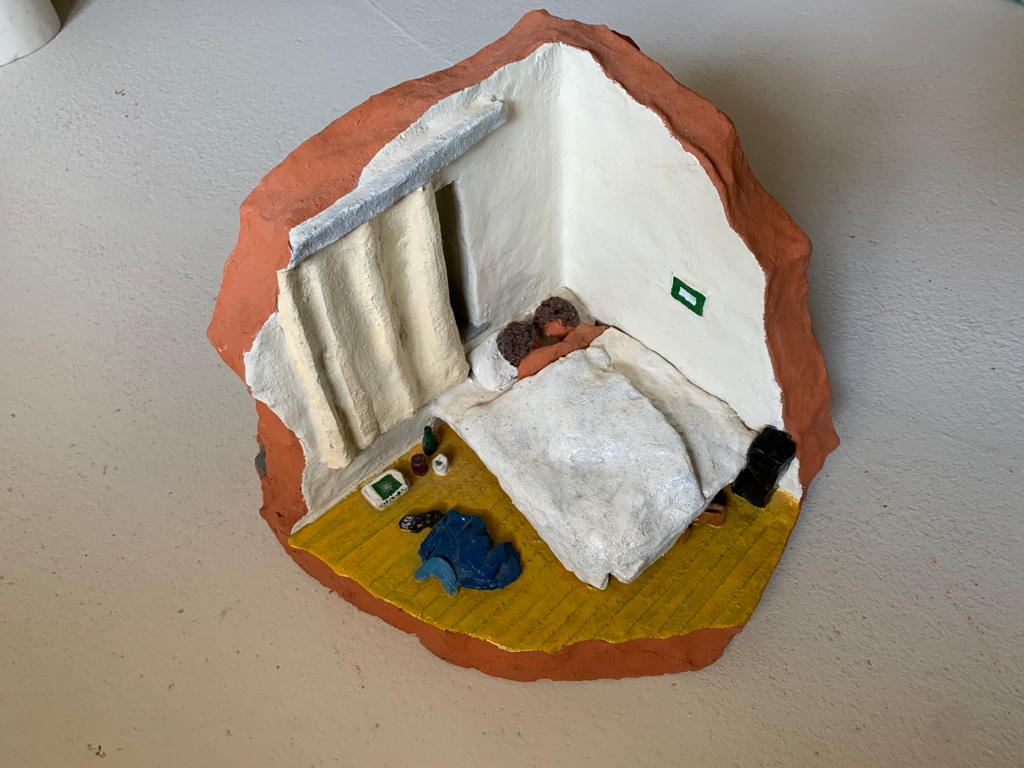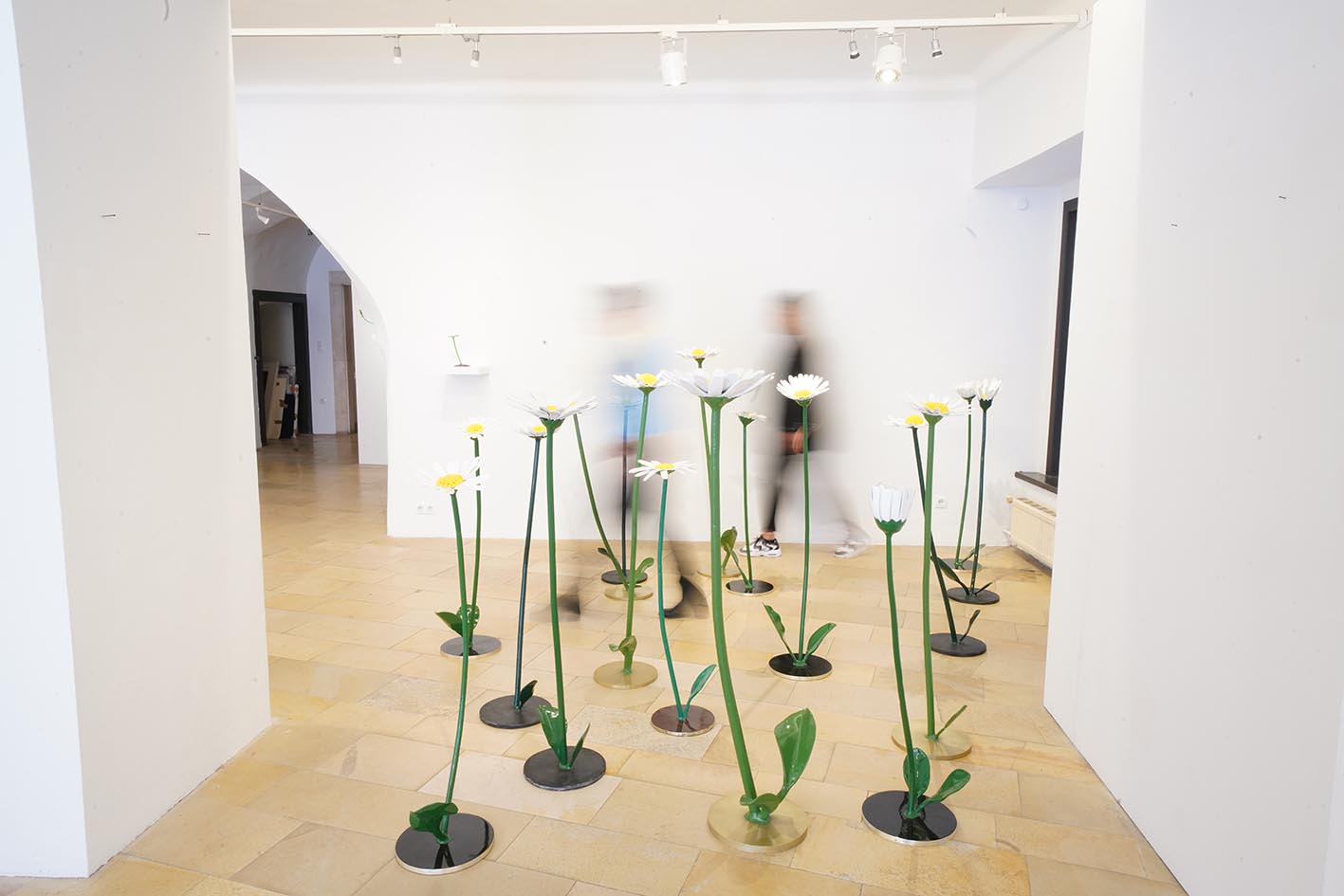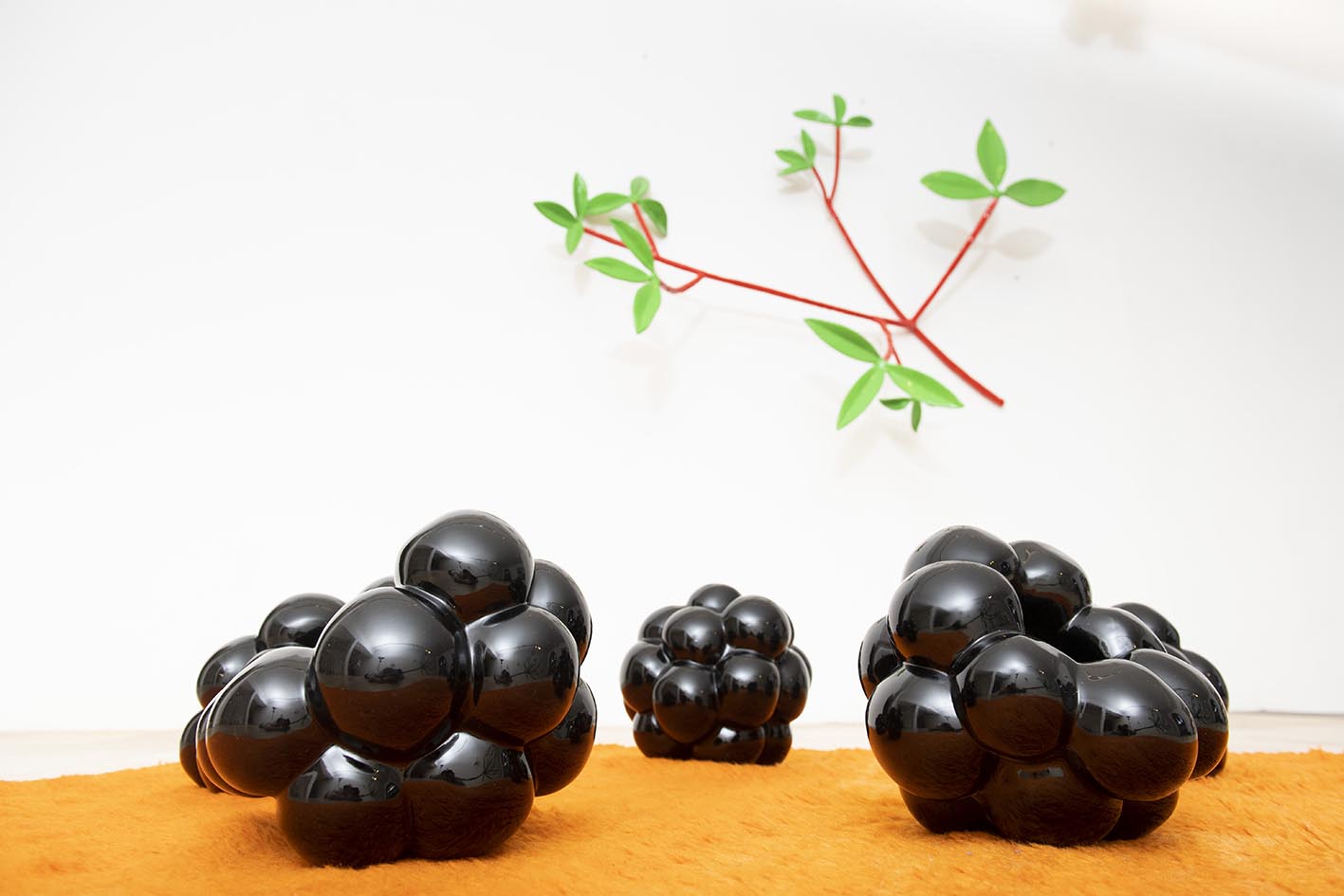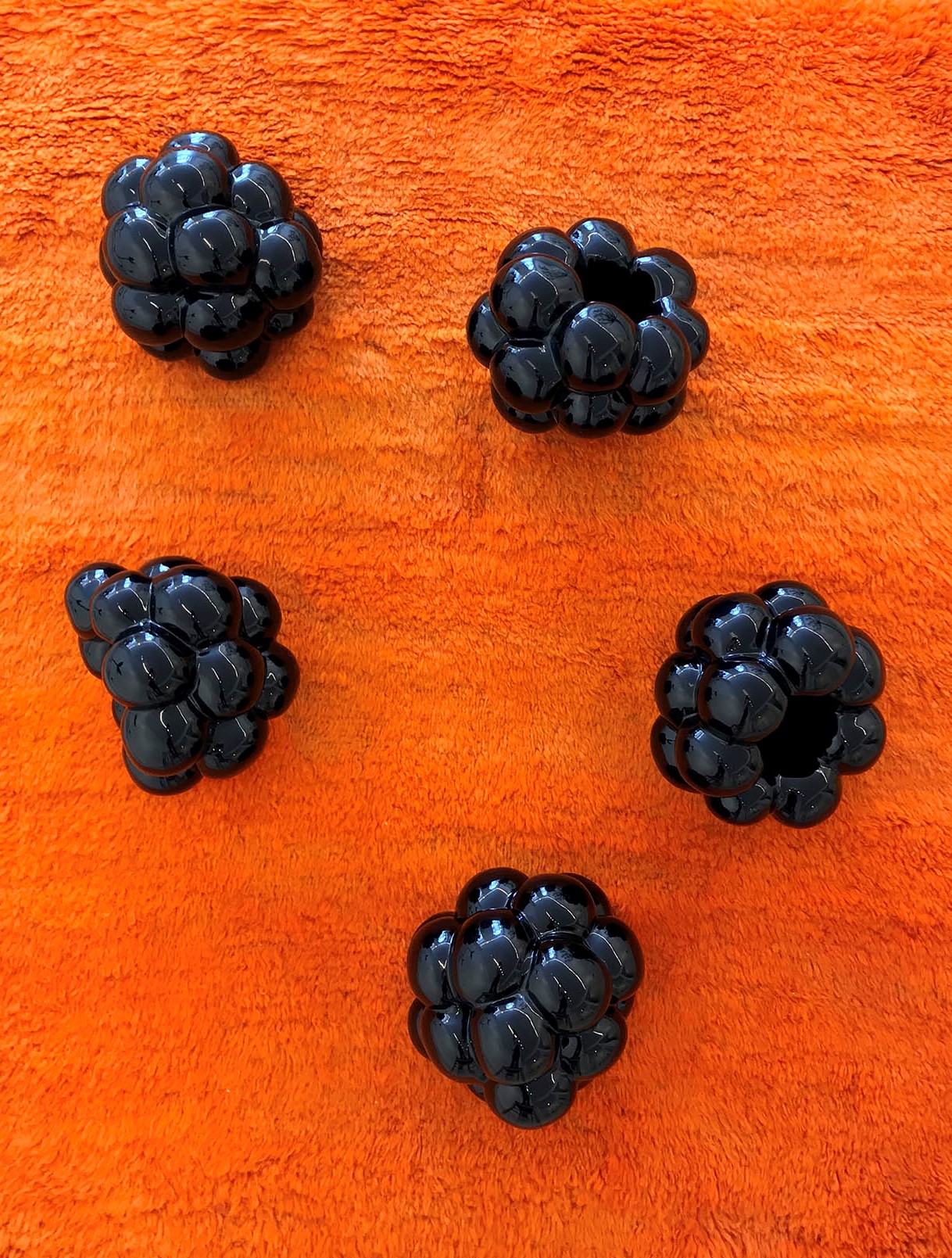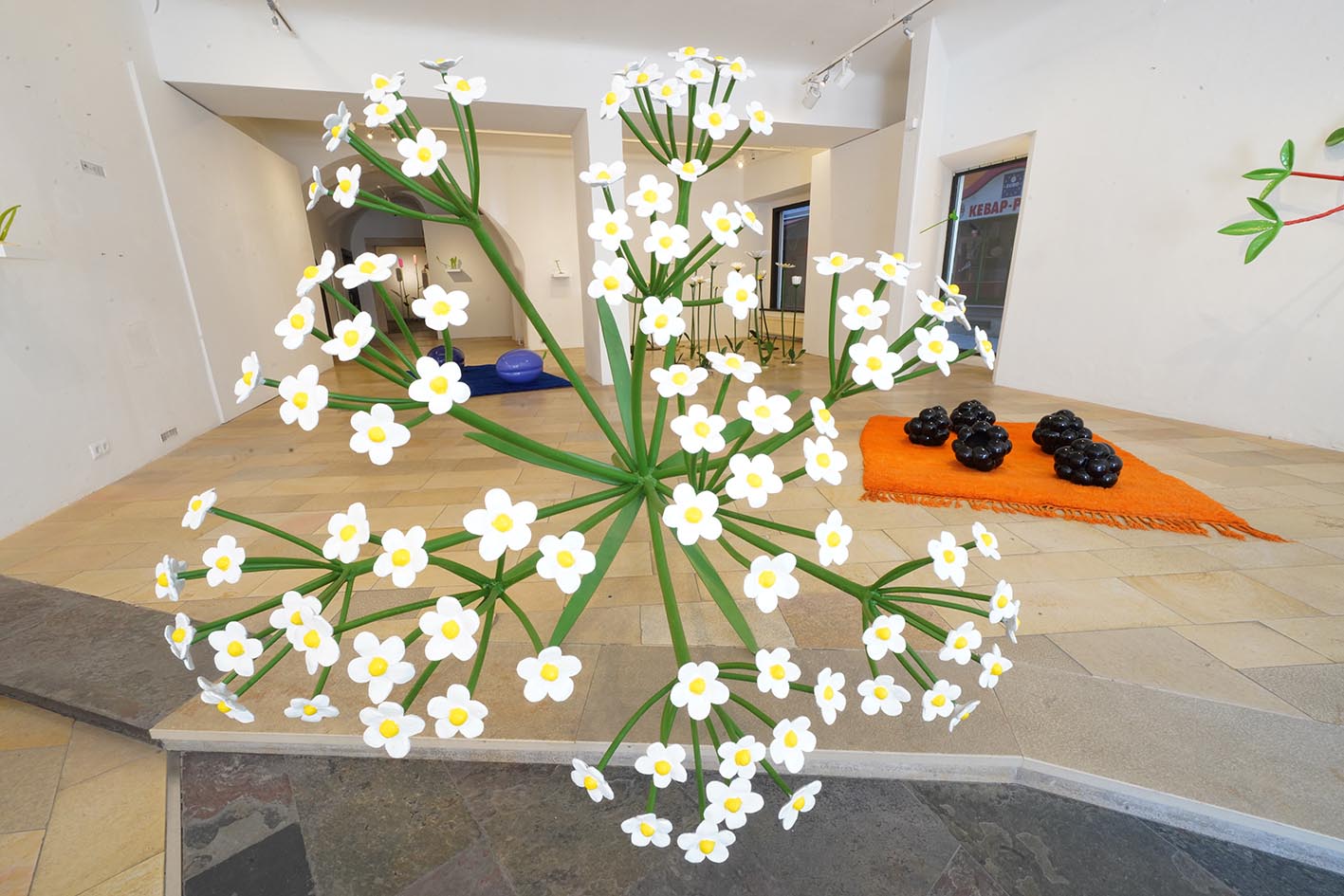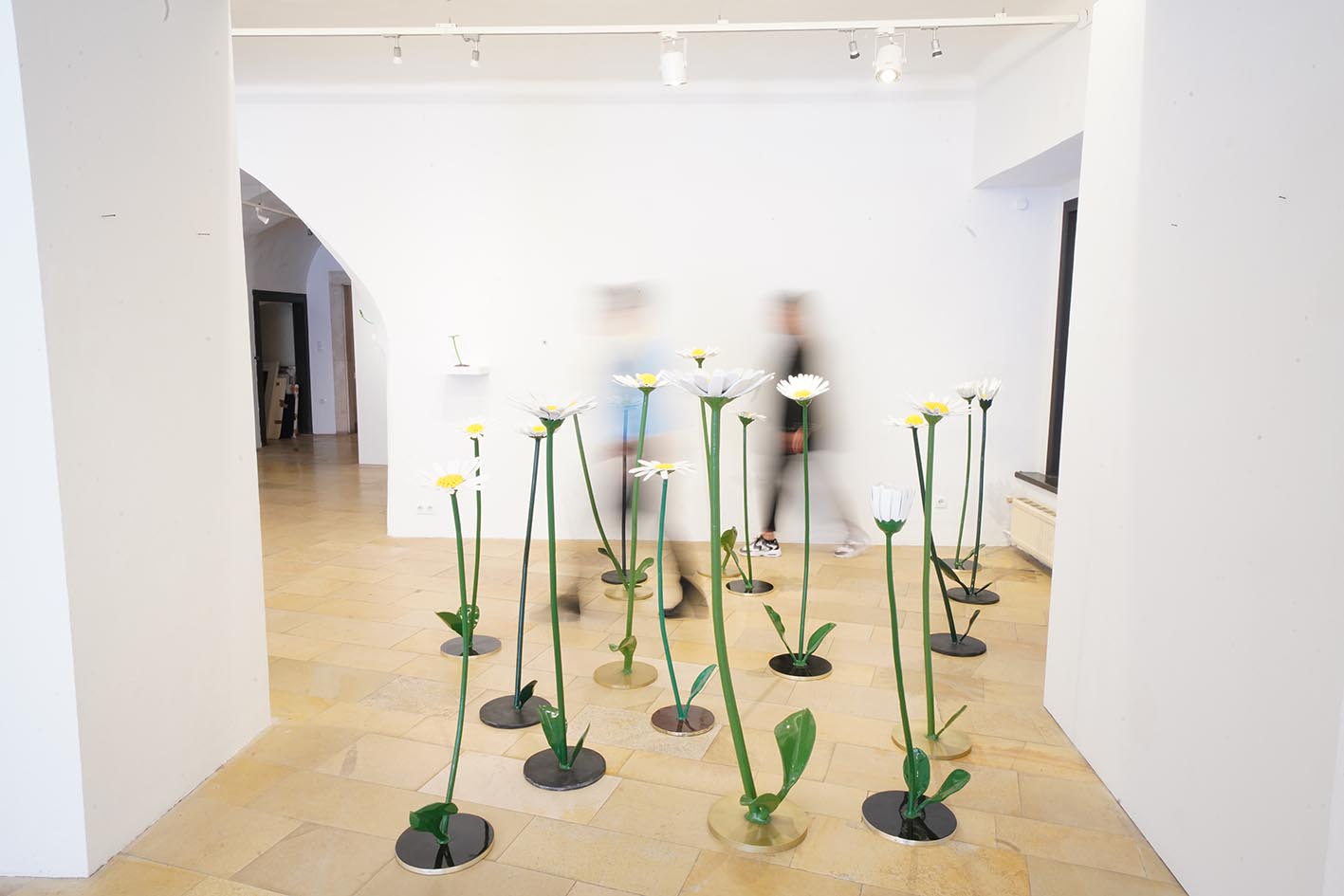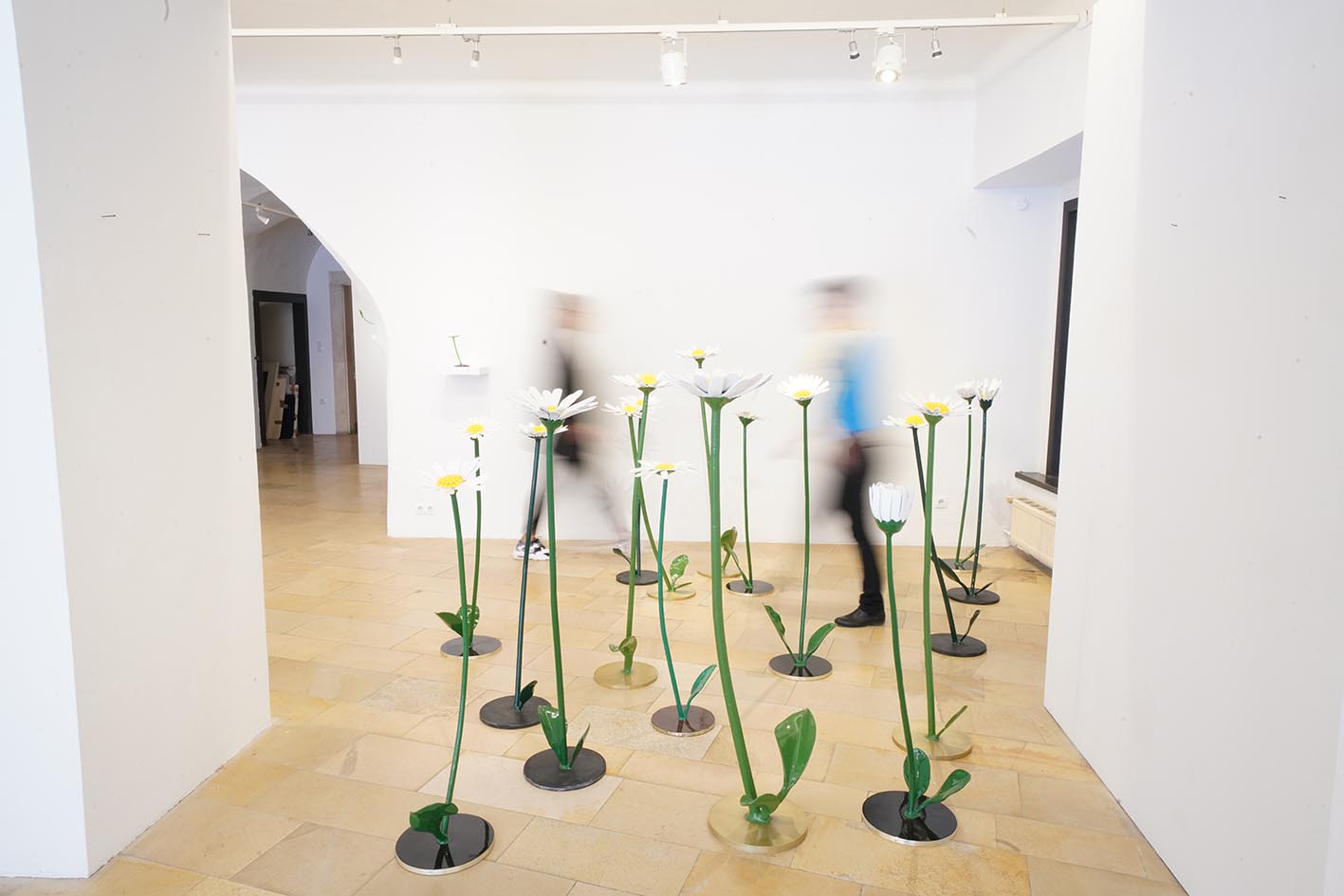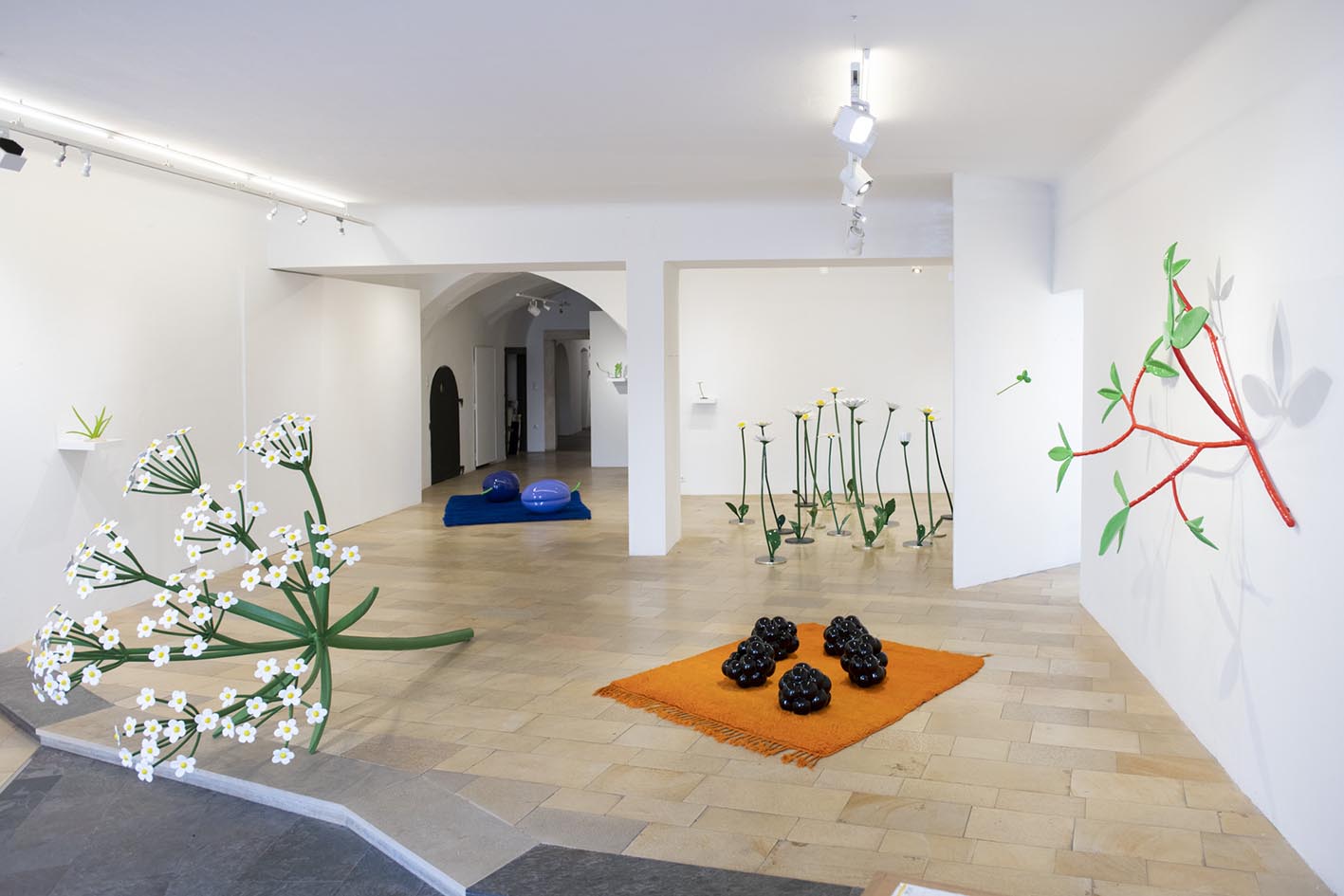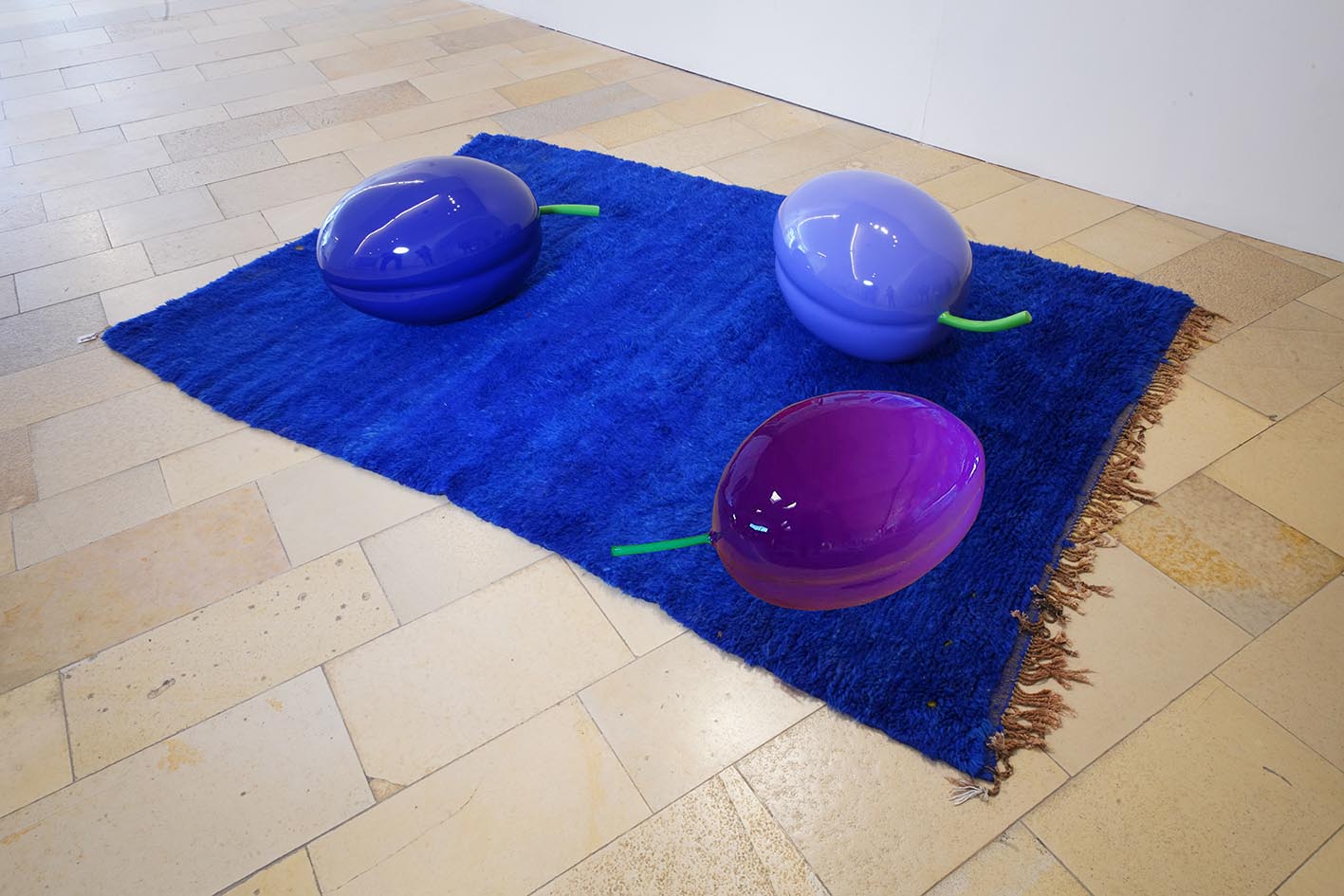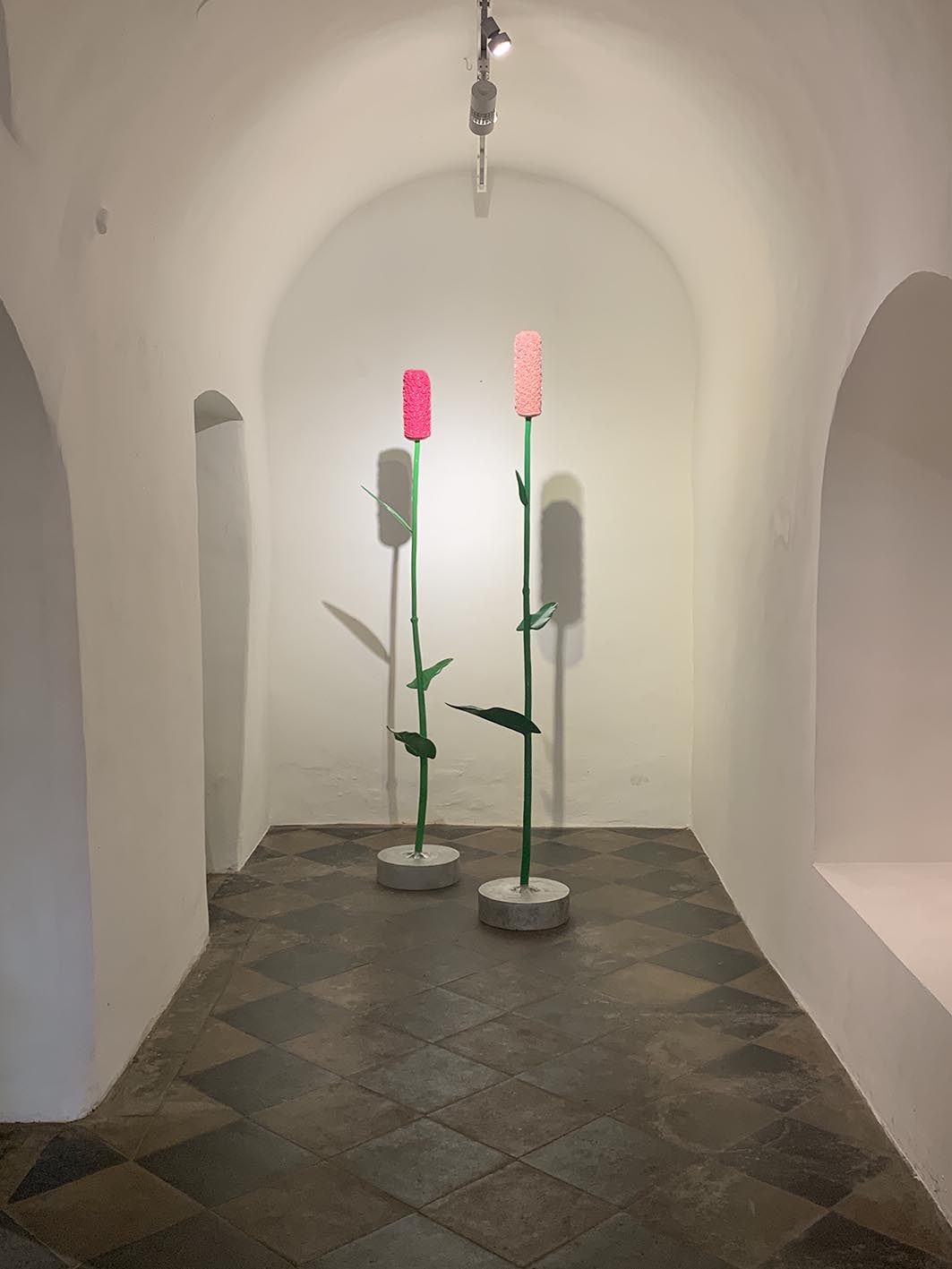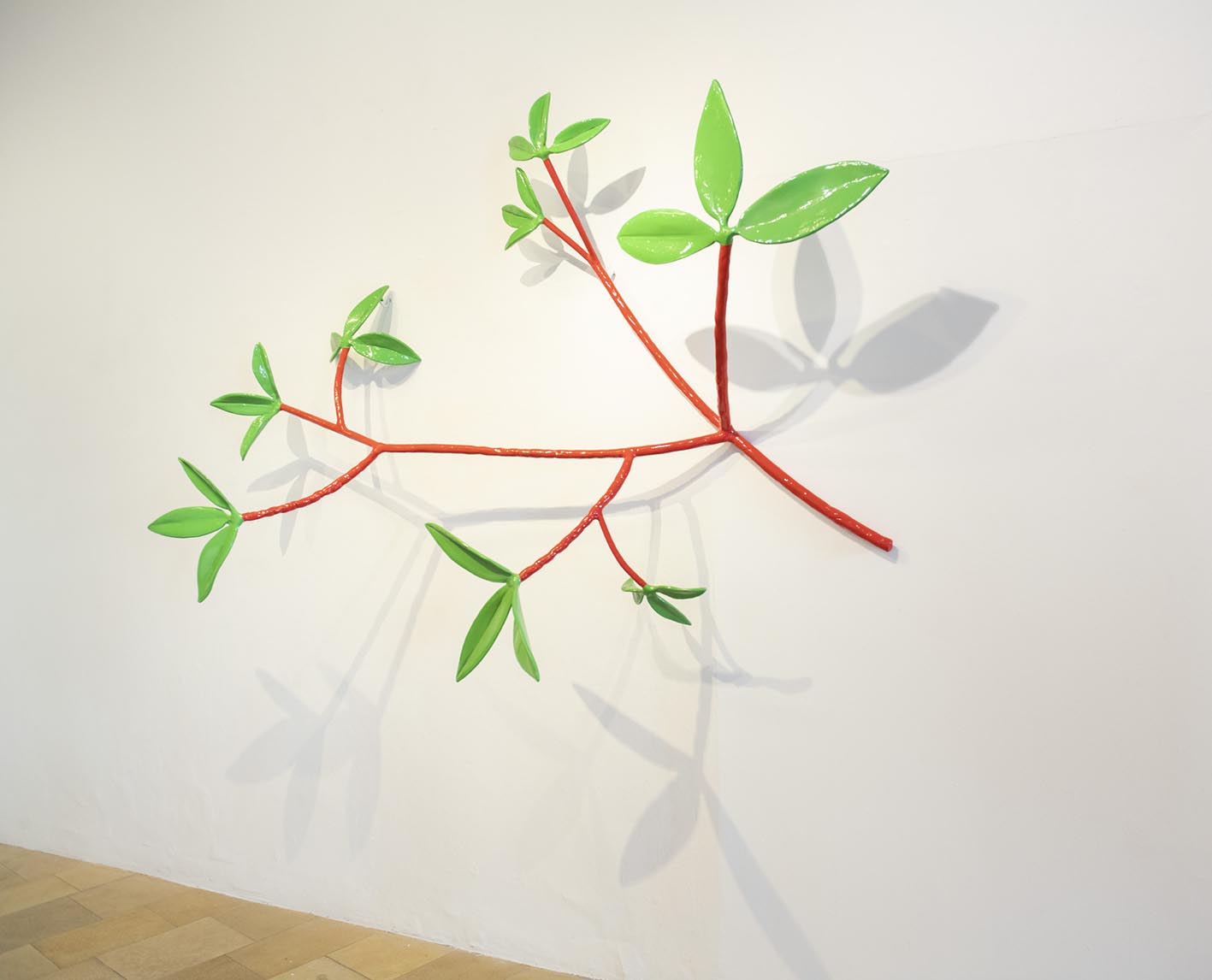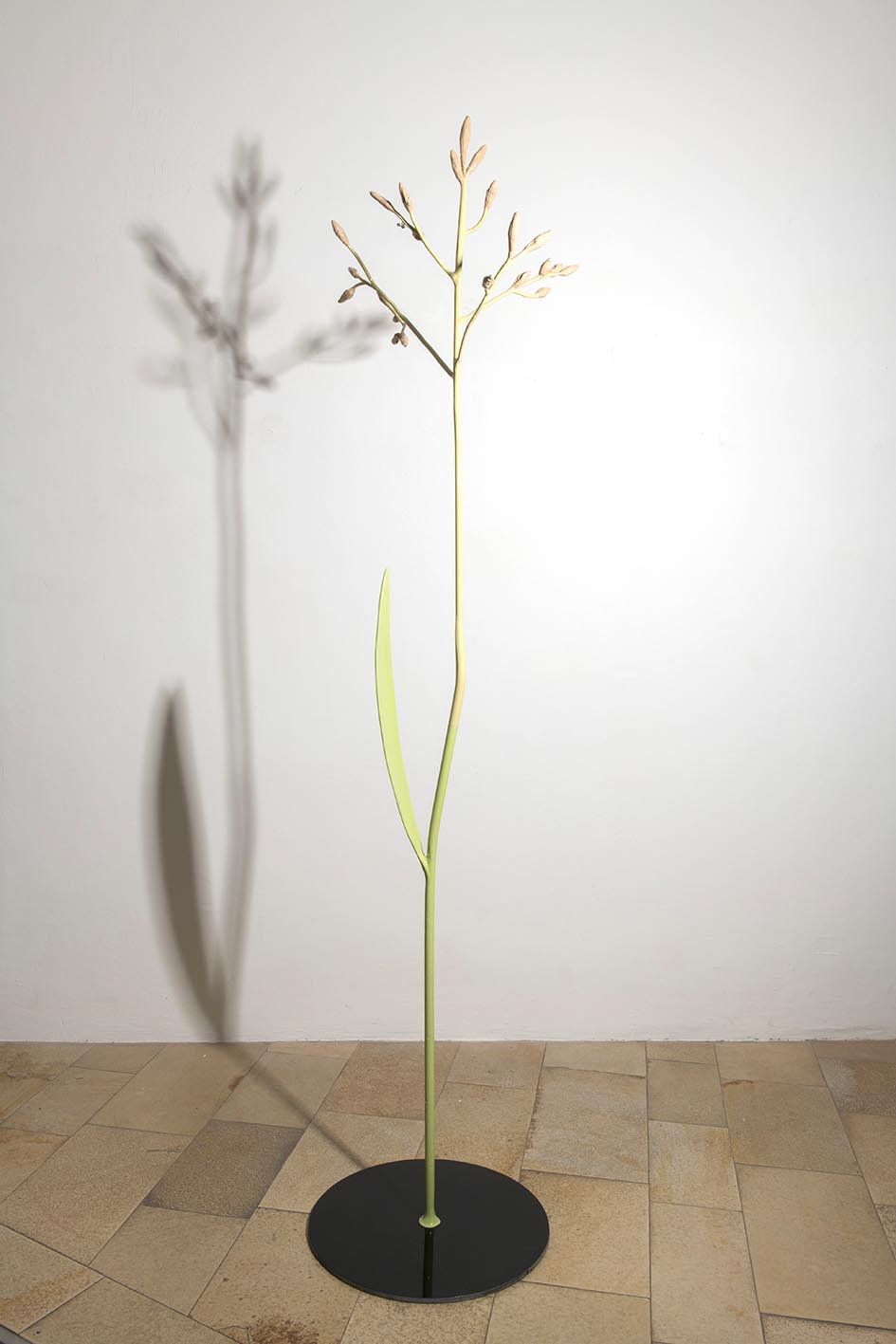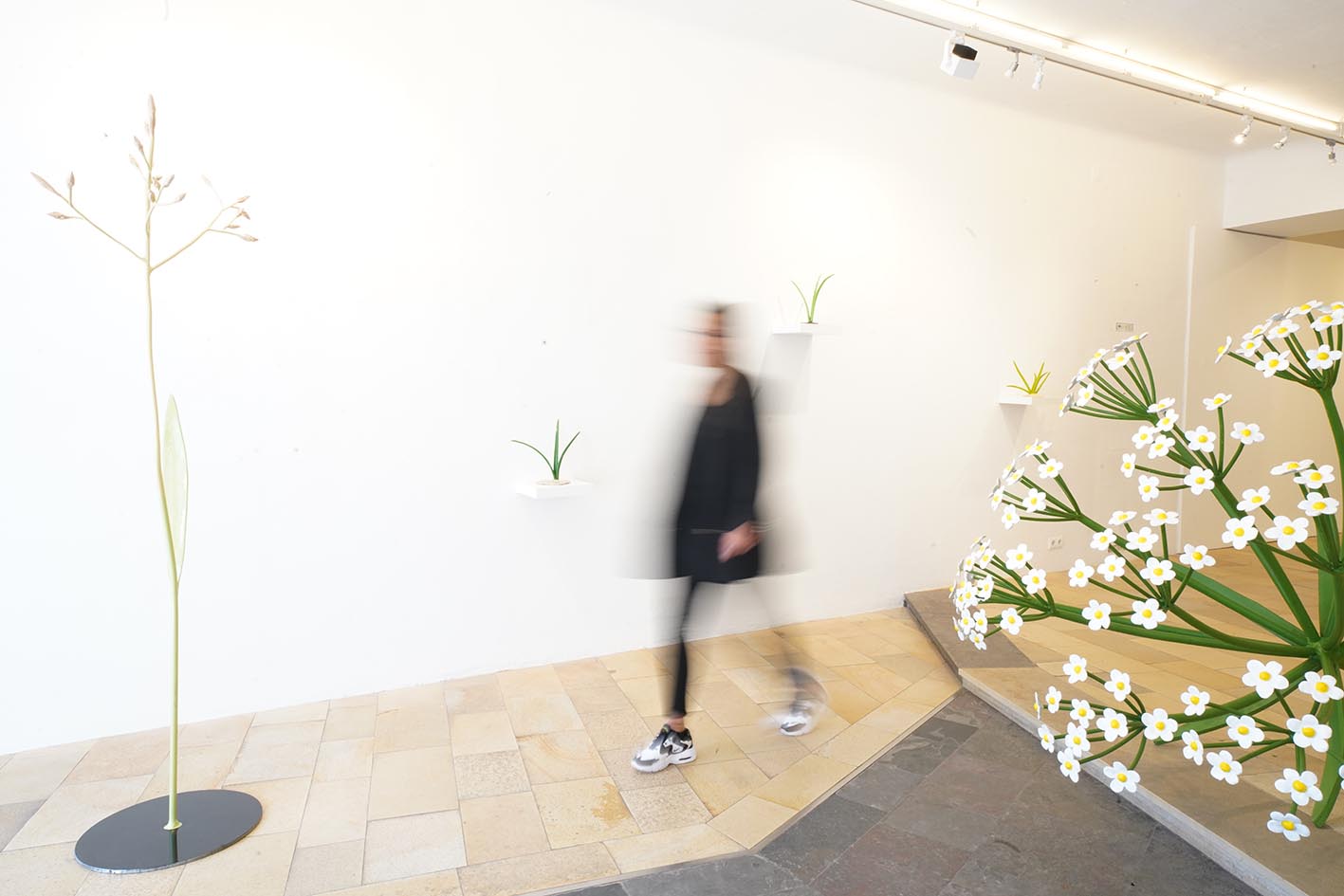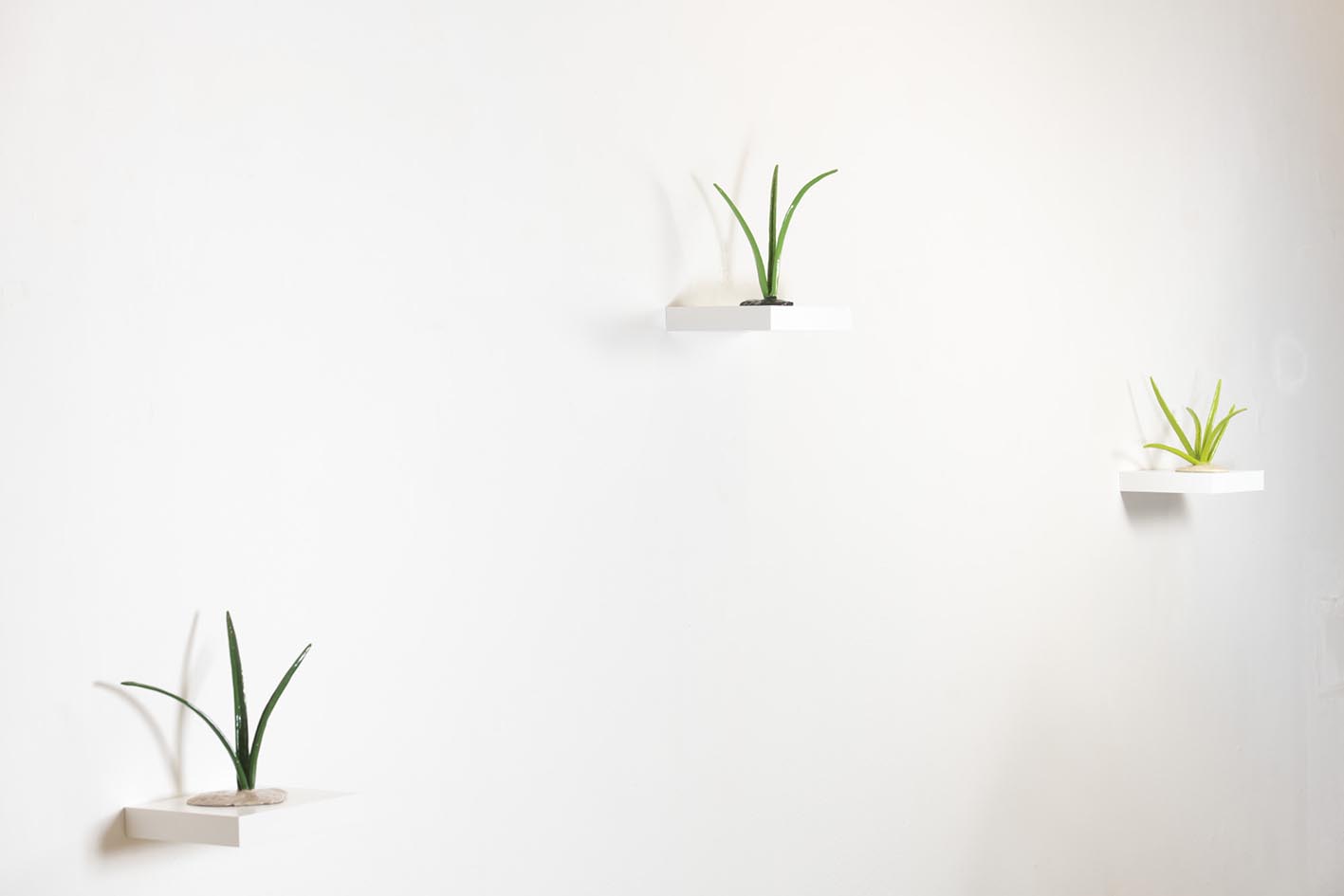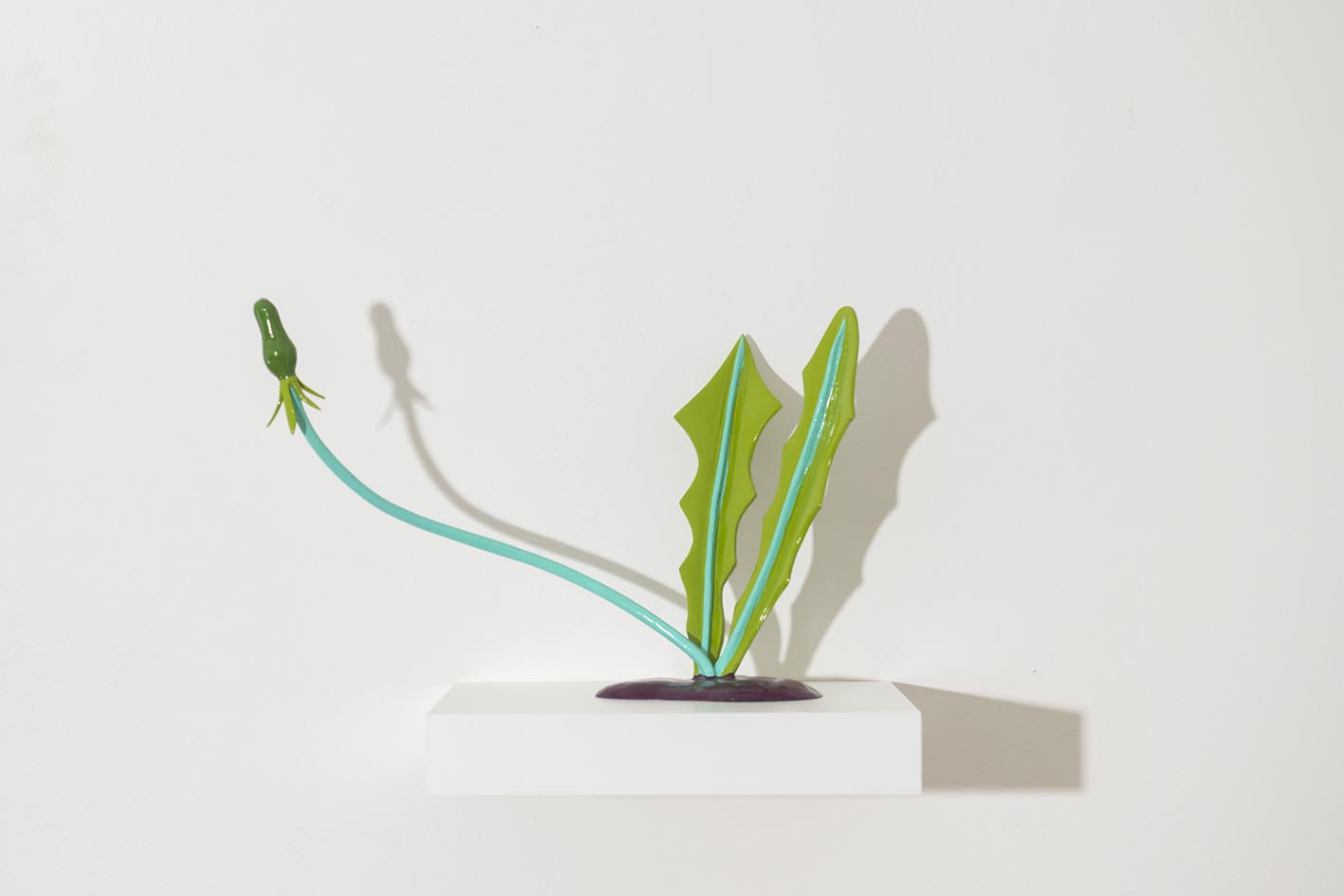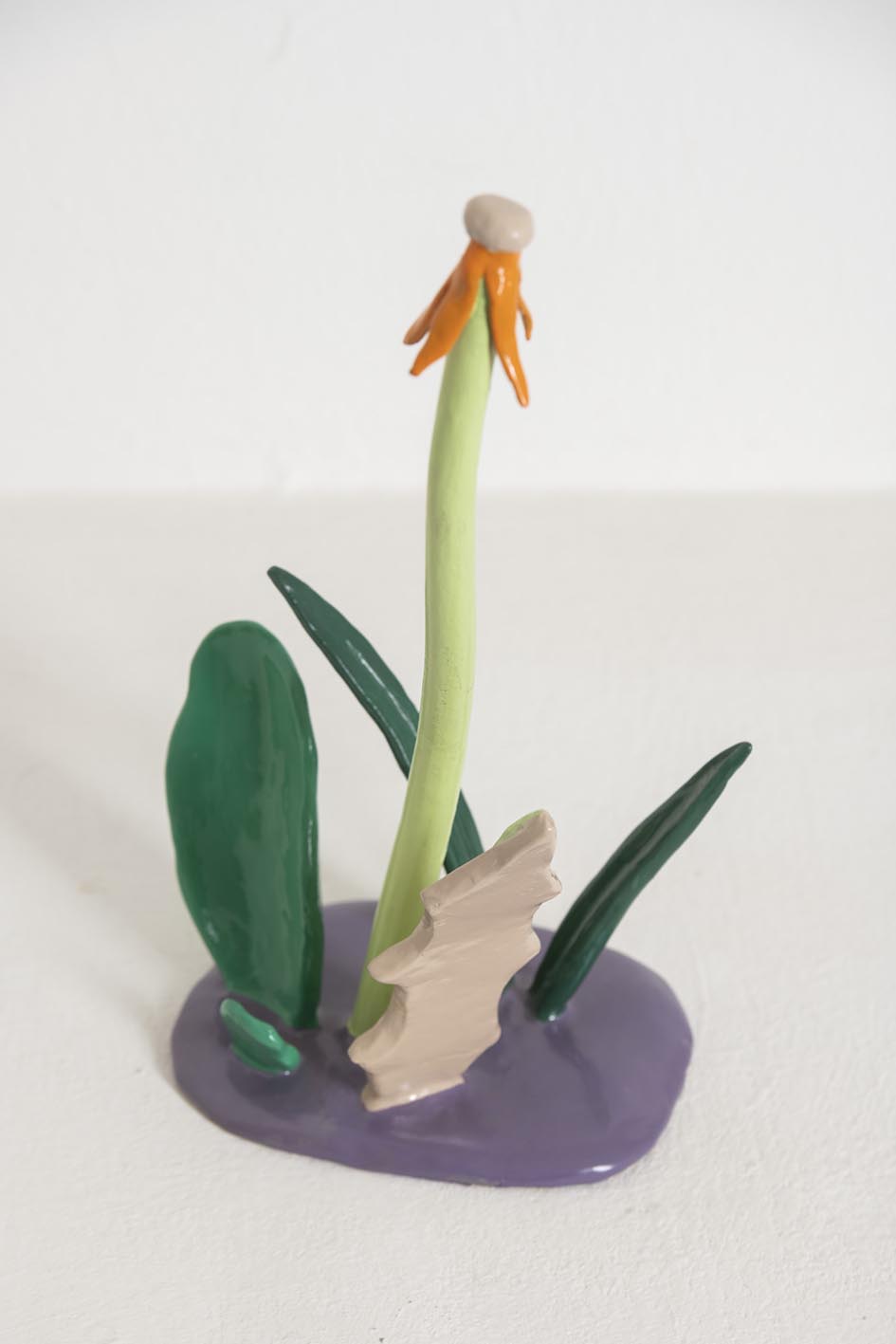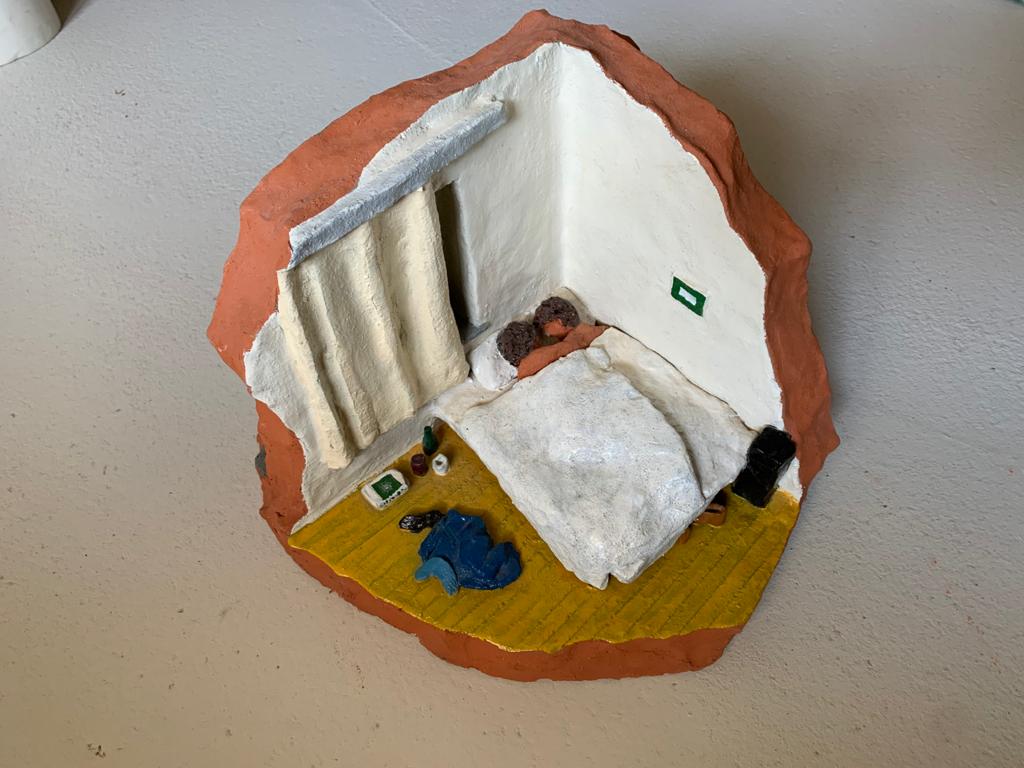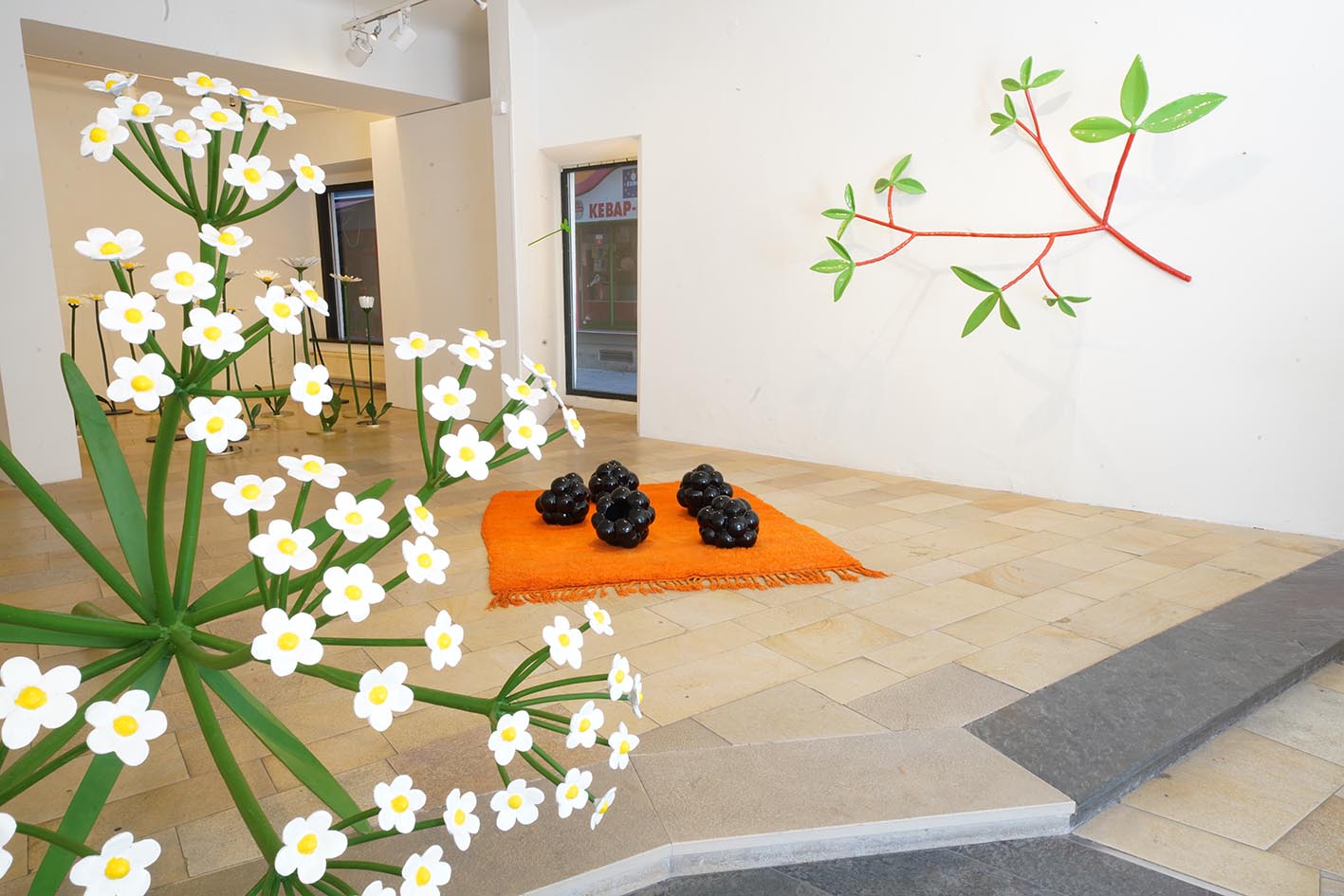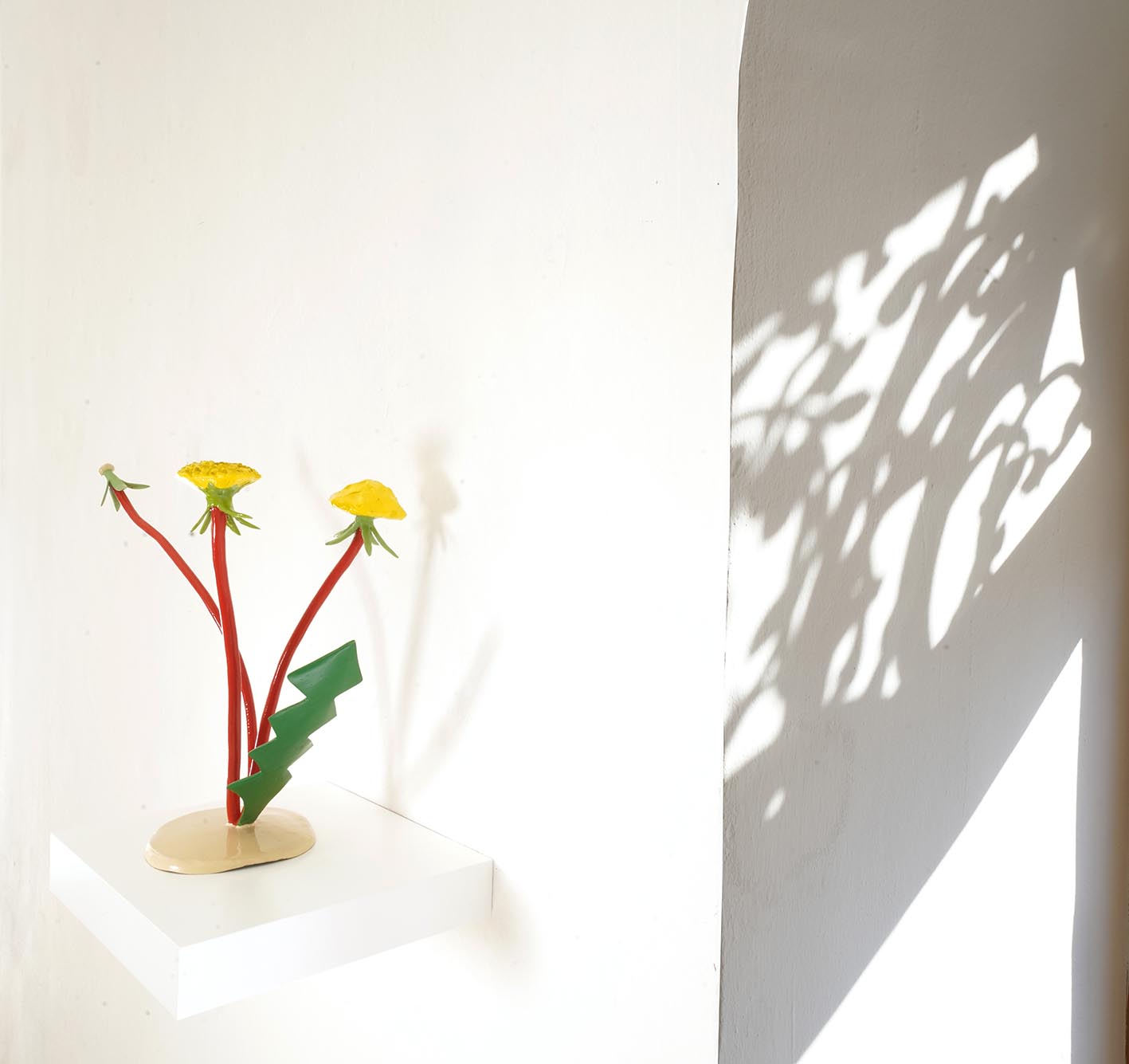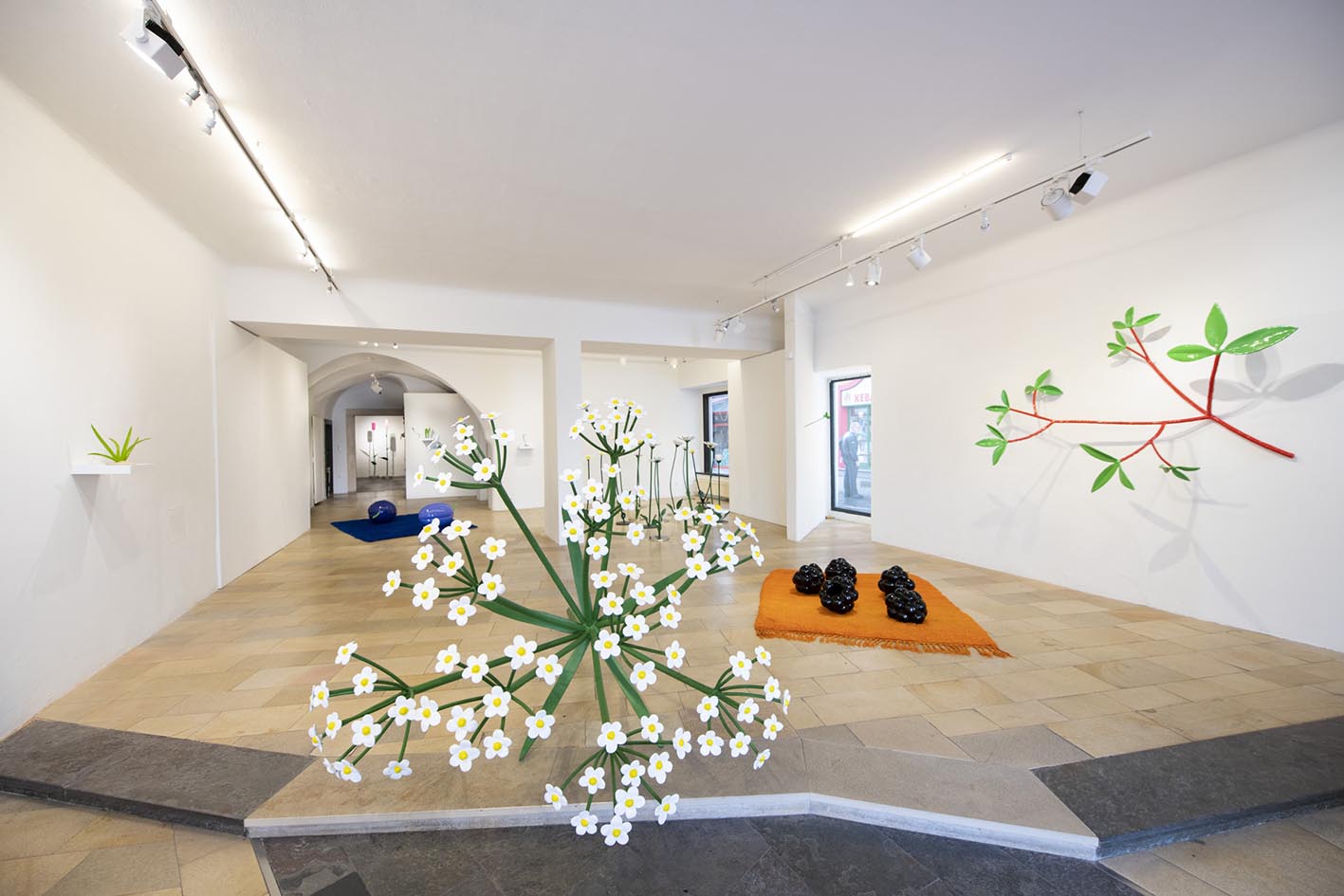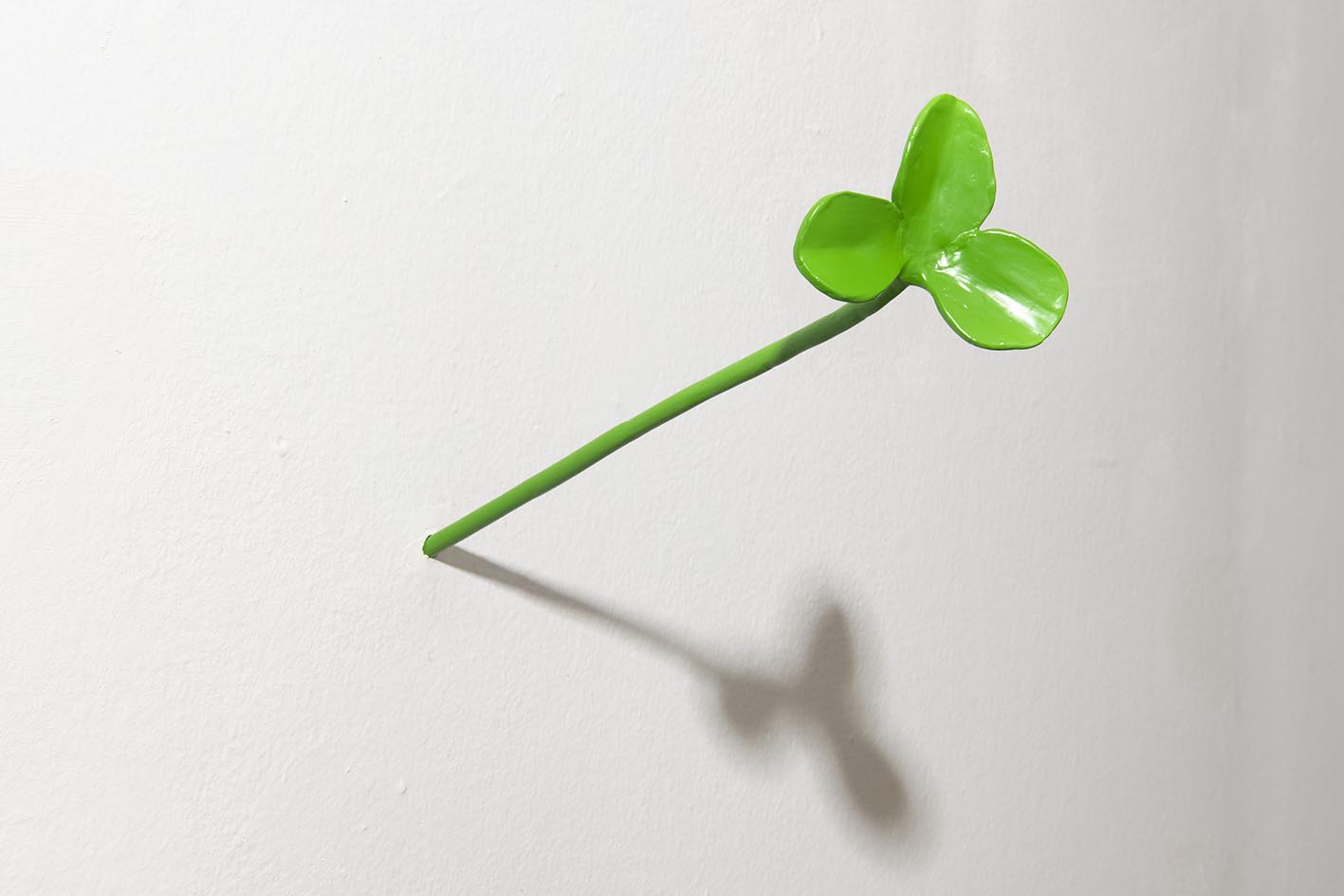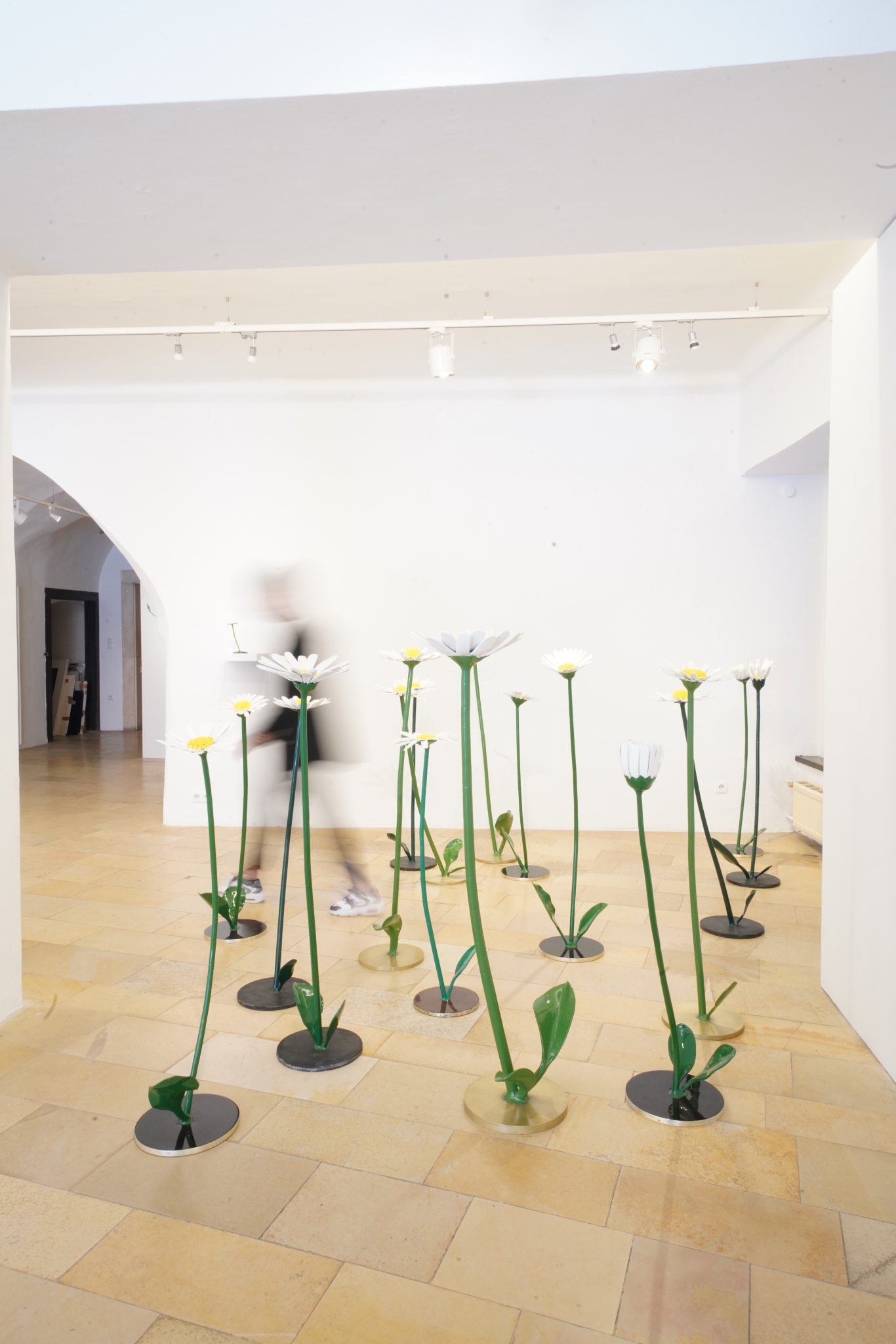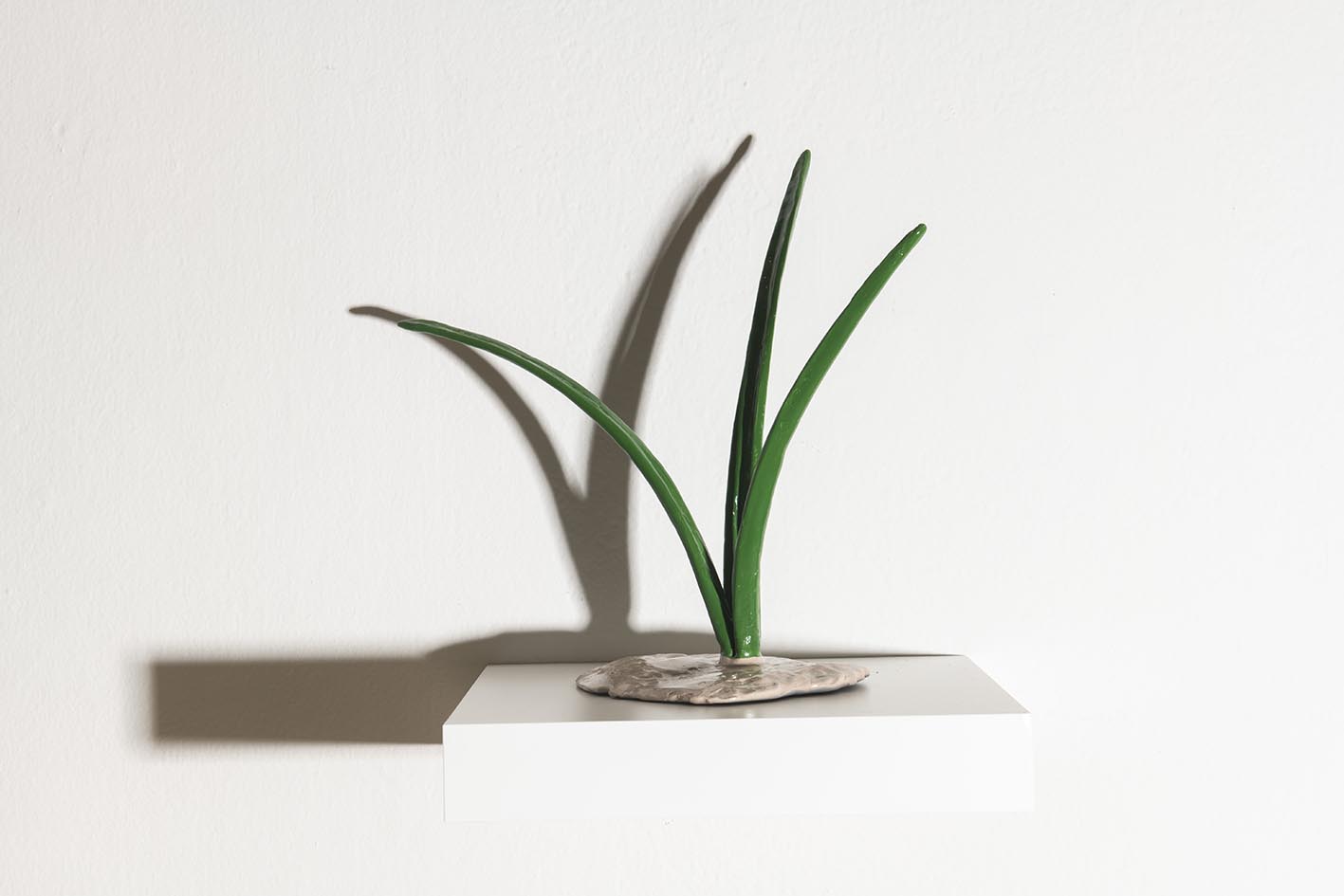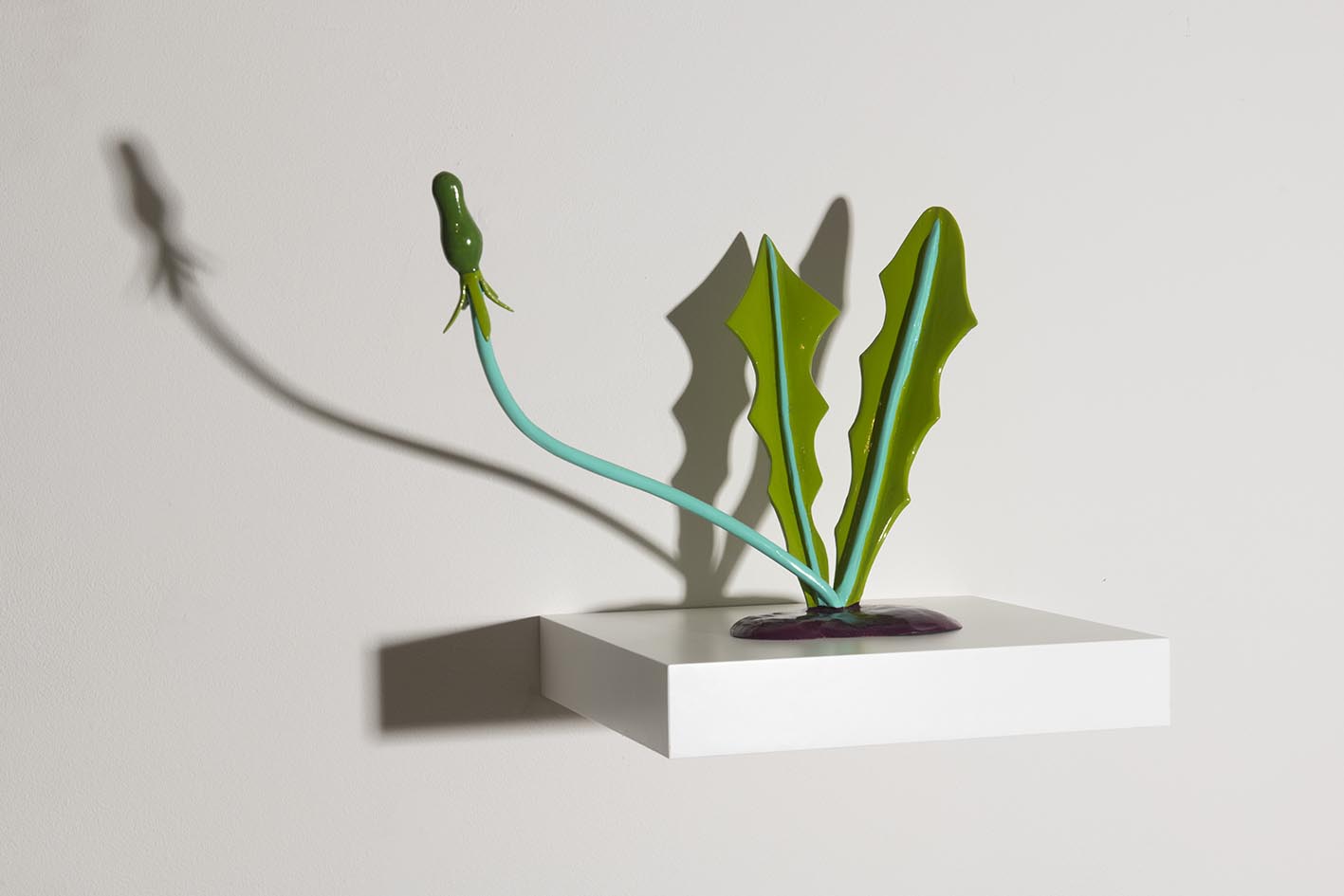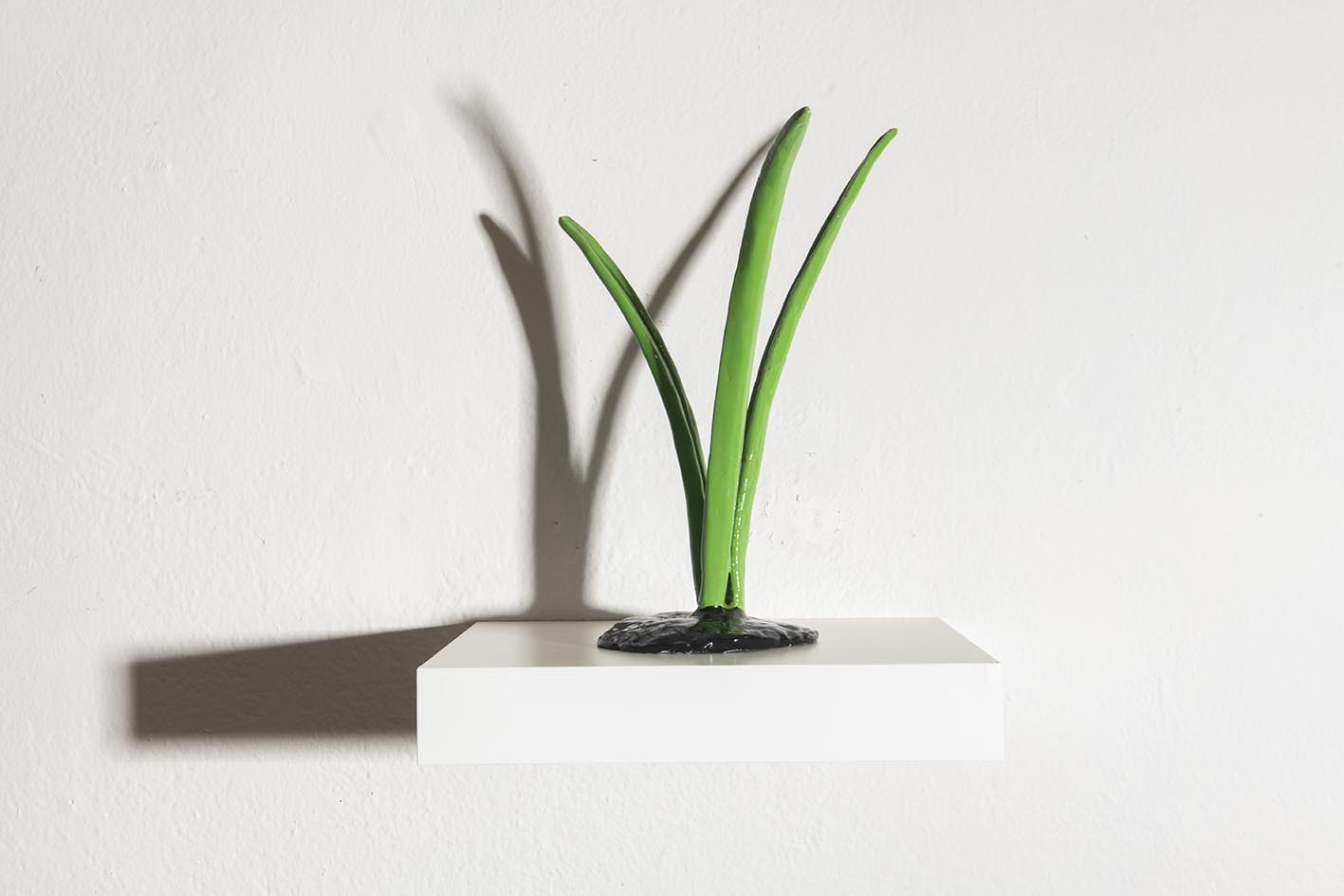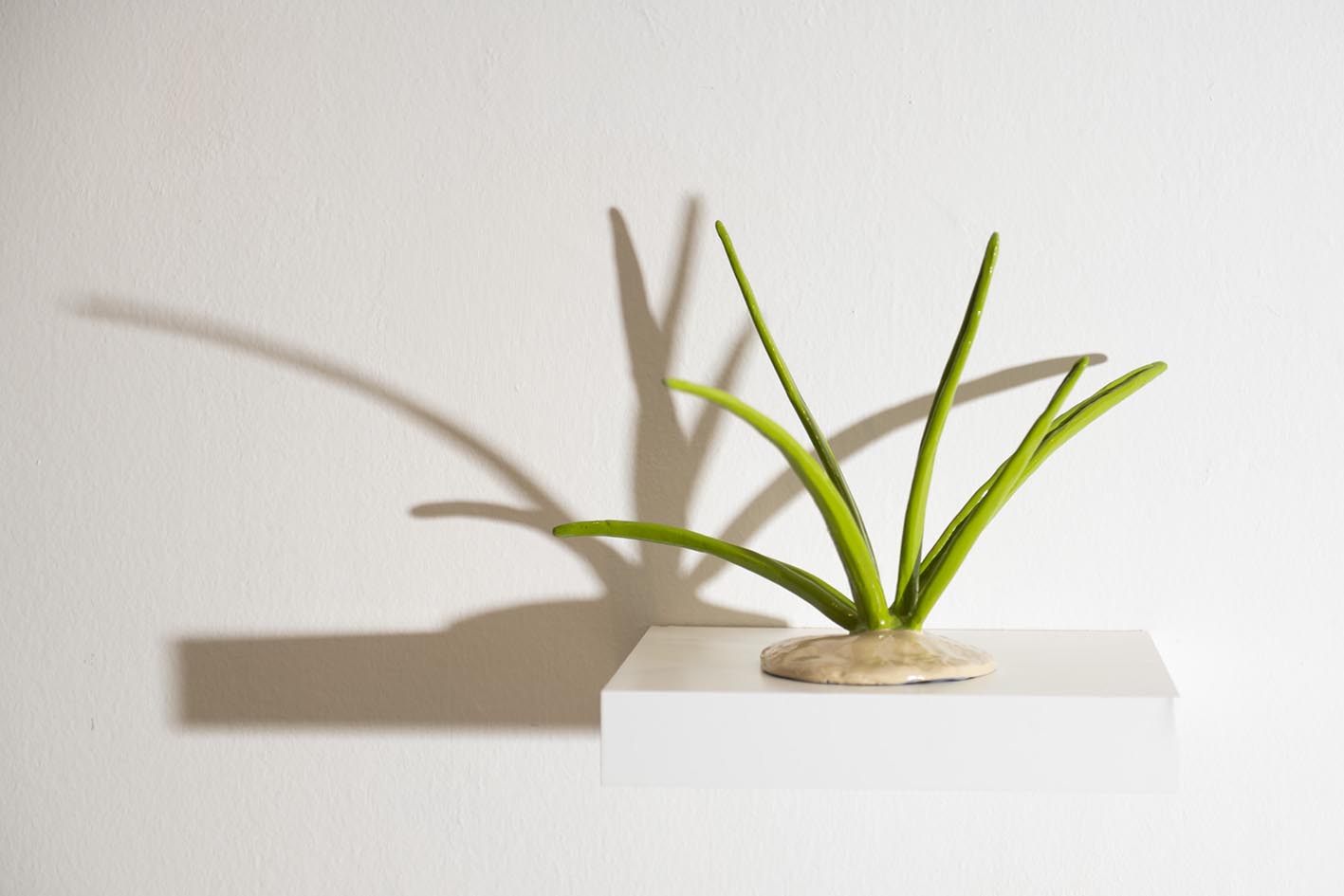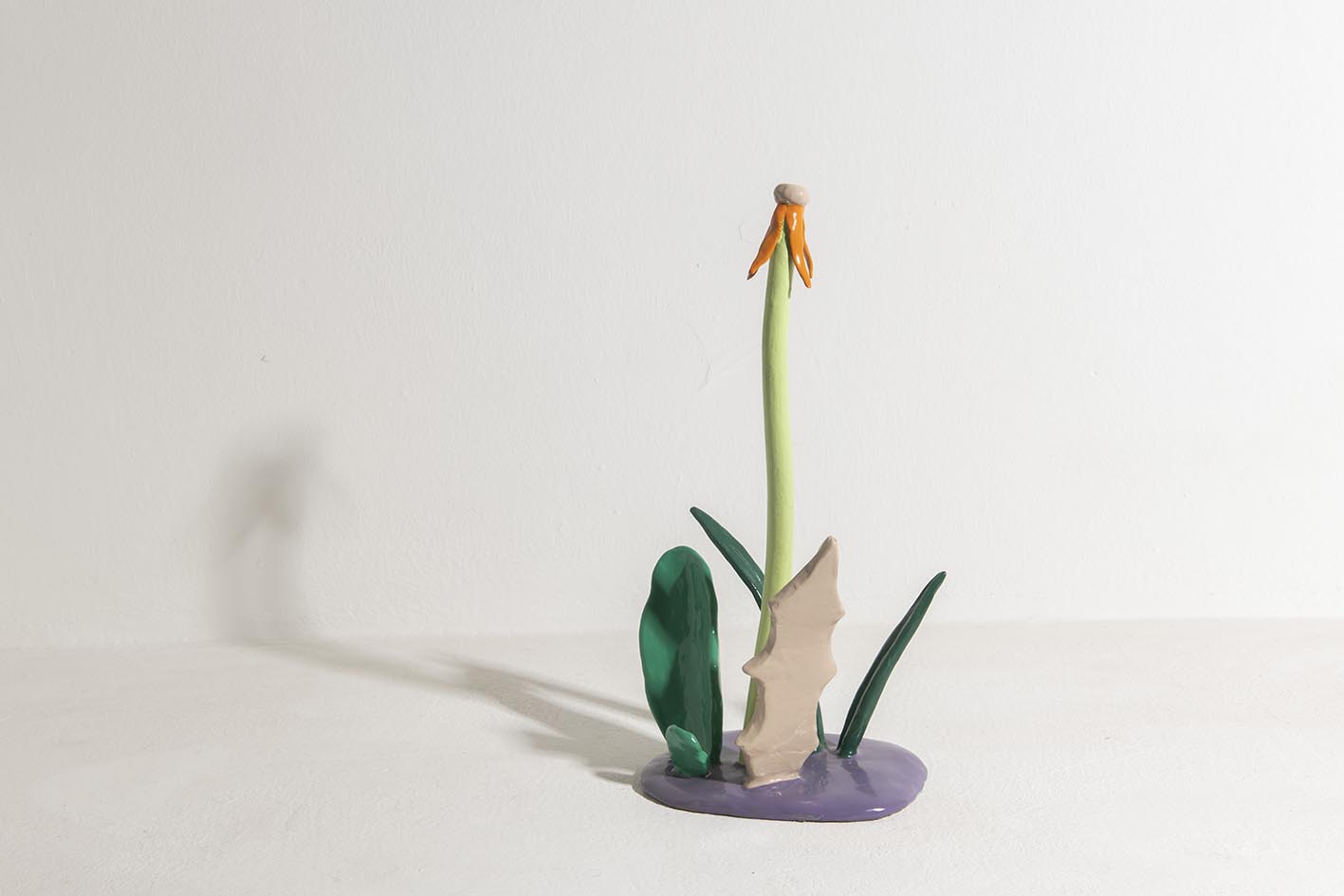EXPLOSIONS IN SLOW MOTION – Thomas Stimm
Exhibition from 14. may 2021 until 15. June 2021
Curator Günther Holler-Schuster
The exhibition starts with Grazer Galerientage.
Due to the current situation we do not make an opening. At the beginning of the
show there will be an introduction video accessible here.
The artist will be present on Saturday, 15th of may.
There will be a catalogue to this show.
„Flowers are explosions in slow motion, similar to the expanding reactions in the cosmos.“ Thomas Stimm
Flowers, grasses, berries – elements from nature that constantly surround us, as a matter of course – are Thomas Stimm’s leading current motifs. His art can be defined in the context of sculpture. In the 1980s, three-dimensionality, developed from the lightheartedness of painting, provided the impulse to spontaneously record everyday scenes in small clay models of one’s own surroundings and the actions taking place within them: swimming, sitting in a meadow, looking at a flower, etc. Stimm acted like a photographer who captures seemingly insignificant, private or everyday scenes like snapshots. The moist, easily malleable clay is easy and pleasant to work with. The softness of the clay, which can quickly be brought into shape with one’s hands, as well as the ensuing varnishing of it, create a sensual stimulus, similar to painting. The ceramics also evoke the impression of “knickknacks” – a thought possibly coming from souvenir kitsch. Small groups of figures, flowers, various fruits and vegetables recreate something on a small scale that one may just have encountered in reality. An isolated toadstool – perhaps functioning as a salt shaker – looks monumental despite its small size. It is its meaning in this moment that makes it appear great. Meanwhile we are surrounded by monumental ice cream cones, grapes, apples, slices of cake and other objects of general desire – as well as hedonistic and economic pleasure.
Thomas Stimm and manipulation of perception
Thomas Stimm proceeds in a similar way in his most recently created sculptures. He uses proportions to manipulate perception. By changing material from clay to metal (mostly aluminum), the artist can work on a bigger scale. Ceramics have technological limits and cannot be produced in large format, or only with great difficulty. Aluminum casting, however, not only allows larger formats, but also more precise details. One can create thin grasses as well as voluminous raspberries or blackberries. The quality of colour improves considerably thanks to the industrial painting methods offered by today’s car paints. The sensual character of the work is further heightened.
Pop Art
Pop Art has shown how special an everyday object can suddenly become, how much an exaggeration of the everyday can lead to changed perceptions. Stimm was never interested in criticising the world of commercial goods, the way Pop Art has been said to do. It was much more decisive for him that Pop Art suddenly enabled an unprejudiced access to reality. The joy of colour and the gloss of the surface made it possible in Pop Art to continue making sculptures and still stay relevant – not to lose one’s topicality. Stimm’s early years were characterised by a critical approach to society, to art, to life in general. In addition to all the political activism, the performance and happening culture, how should the ordinary everyday object occupy space as evidence of an aesthetic imagination? The idea of ready-mades certainly still plays a role here. However, this was modified, in the context of Pop Art, if you think of Warhol’s “Brillo boxes”. A completely inconspicuous element from everyday life – a detergent pack – becomes a special object. This does not come about through direct adoption of the real object into the system of art, but through imitation. Warhol paints wooden boxes in the same dimensions as the washing powder boxes and paints them like the original. What do you have then? A three-dimensional painting, the glorification of a cleaning product, or a sculpture. Our cultural contract makes it possible to speak of a sculpture in this case – the transfiguration of the commonplace (Danto).
Stimm also takes his motifs from his immediate vicinity. He has long since noticed that nature has always been with us as a measure or system of reference, and that art has been referring to it in different ways for centuries. The degree of meaning and the associated pathos is enormous in relation to the different conceptions of nature. How can one dissolve this pathos and see things without prejudice, understand them as something of one’s own and something that comes from life? How can one throw off the ballast of cultural history? By persistently sticking to seemingly casual motifs as an artist, questioning them again and again, and bringing them into different forms, positioning them differently to one another and thus arriving at a narrative that can possibly become part of an overall concept.
Thomas Stimm influenced by comics
Perhaps the consideration of the comic can help here. Stimm was enthusiastic about comics from an early age. For him, they start where art ends. Ultimately, they create an independently functioning cosmos with its own laws and with a completely different perception of reality. Suddenly, animals can walk, speak and perform actions like humans. We experience something similar with inanimate objects. Fruits, flowers or mushrooms can often have human characteristics in comics and behave like humans. In principle, Stimm also sees his plants as living beings, which they are, but with expanded possibilities. The flowers and fruits are deprived of their own dimensions and adjusted to human proportions. This gives them more life of their own and their new properties are more visible. Suddenly you seem to be communicating not only with the audience, but also with each other. They stand or lie together in groups, building up a kind of intimacy with one another. Daisies stand together in a group and make one think of the “The Burghers of Calais”. As an association, the famous group of sculptures, by Rodin, brings the history of modern sculpture into play and thus transforms parts of the narrative into questions inherent in art. For Stimm, art is a means of communication, of asking questions in general, so it is not surprising that he strains this element in multiple ways. Apparently, this type of communication works better with everyday objects that have already built up a certain narrative or cultural connotation in each of us, but have still mostly been spared any general pathos.
Thomas Stimm and the choice of colur
The choice of colour brings an additional element that rises above convention. Not that coloured sculptures haven’t been around for a long time. Art history even shows us that they were the norm. However, art history also shows that colour has been systematically displaced and thus devalued since ancient times. Colour was increasingly trivialised and associated with superficiality. Colour was thus almost automatically excluded from the higher spheres of the mind. The Renaissance, the general move to revisit antiquity in the 19th century (Winckelmann), as well as currents such as Minimal Art or Concept Art make this process obvious. The natural colour of the material, flawless white, interrupted only by black or various gray scales, thus became a symbol of the truthful, the authentic. Again you are dealing with a form of pathos – regulation that has led to an imperative. The “Neue Malerei” movement of 1980s brought colour back into play in different ways, which also gave Stimm’s reflections new impetus and reinforced his approach to work figuratively, in colour and narrative. An entire cosmos has emerged over the years – initially from observing one’s own reality, later more and more in the form of a monumental imaginary comic.
Stimm sums it up perfectly when he says: “Flowers are explosions in slow motion, similar to the expanding reactions in the cosmos.”
Günther Holler-Schuster
